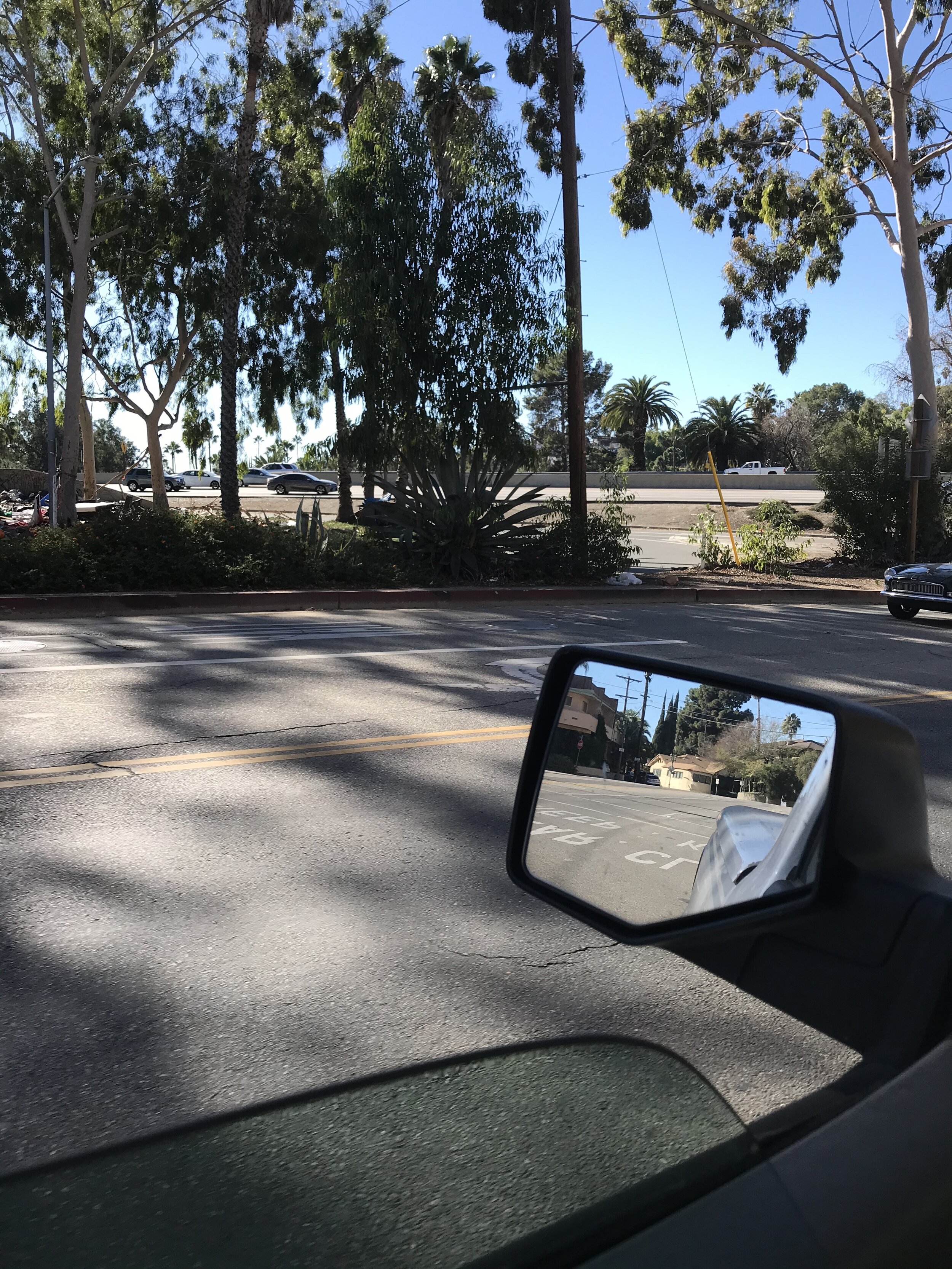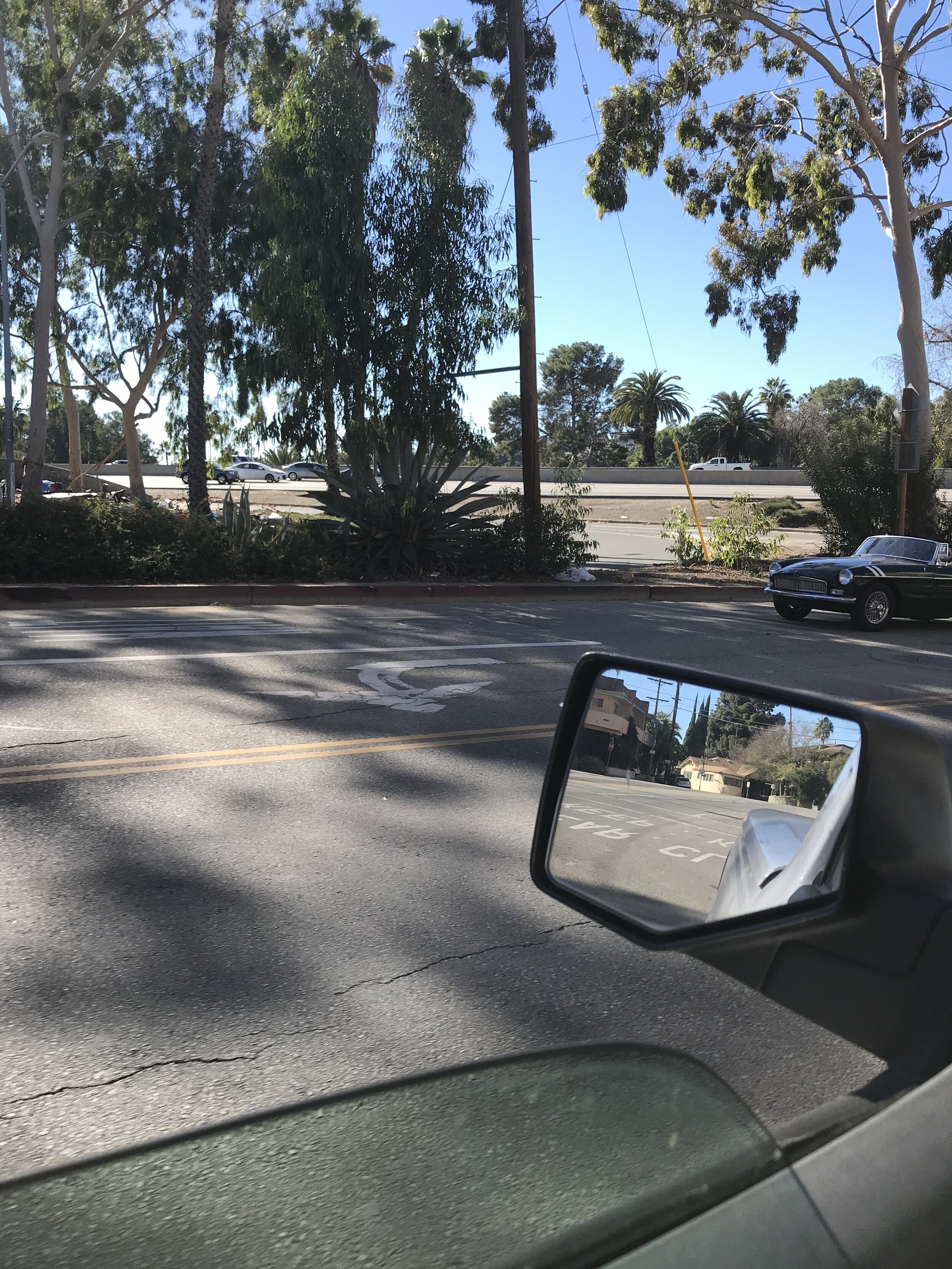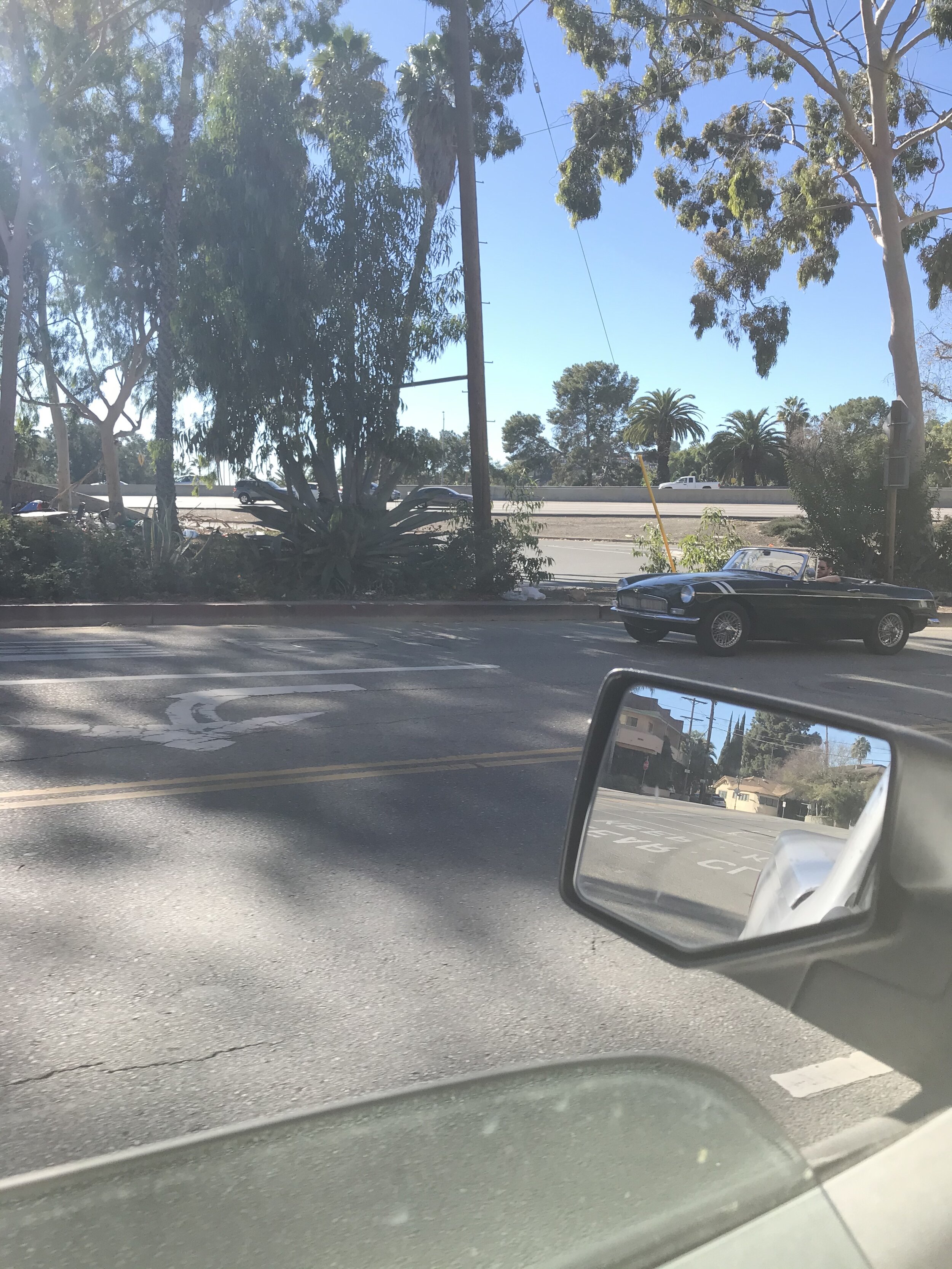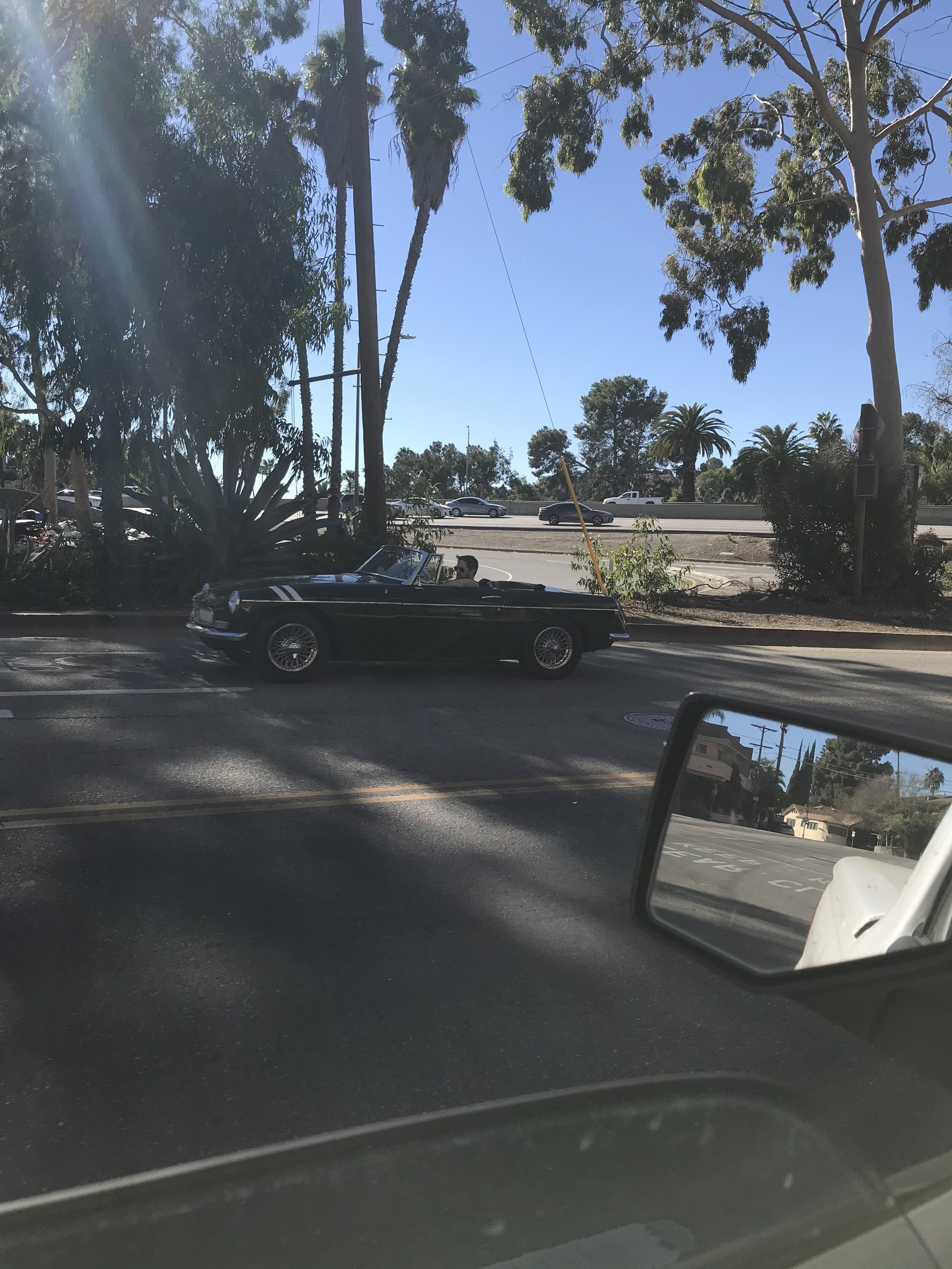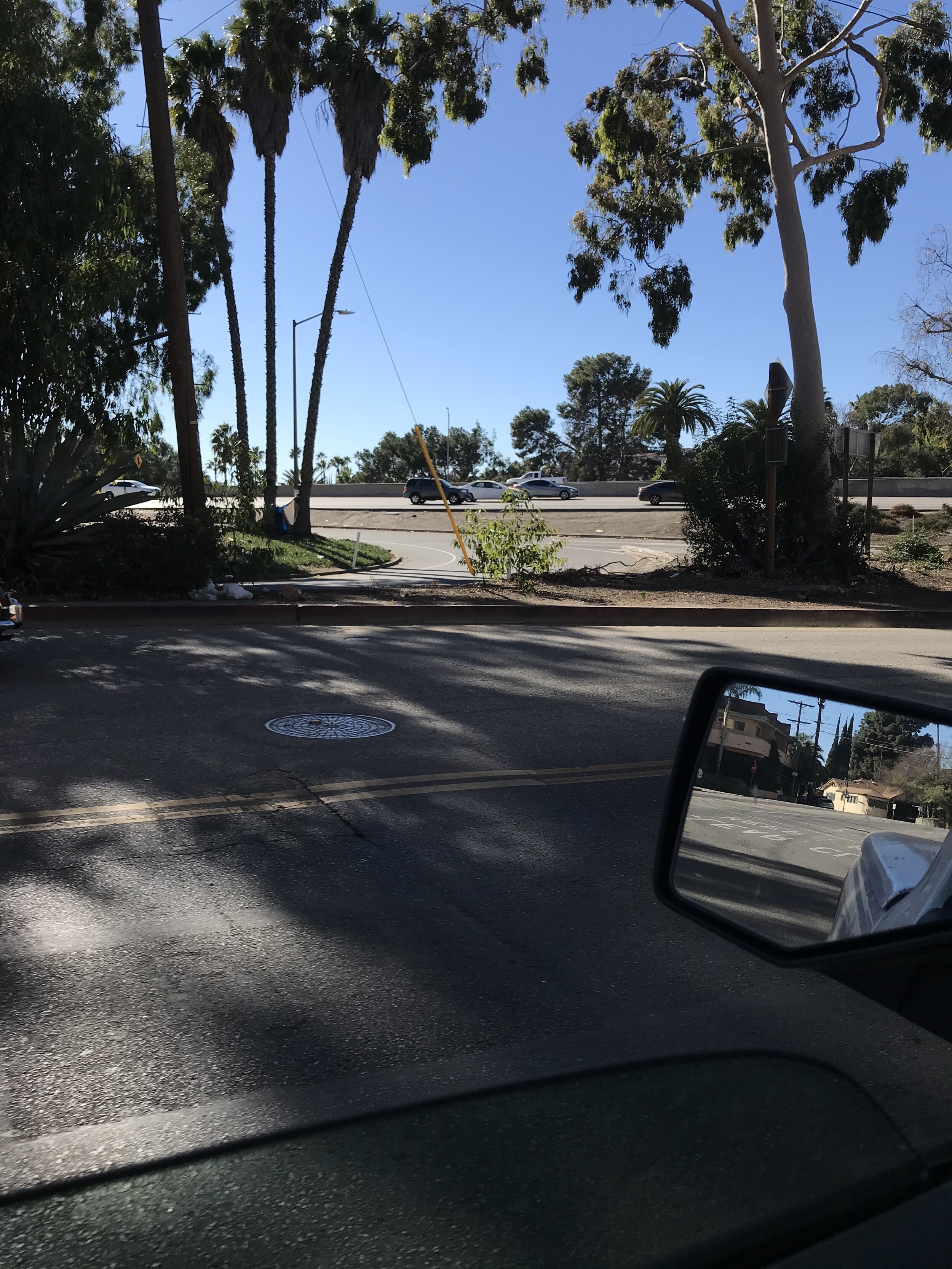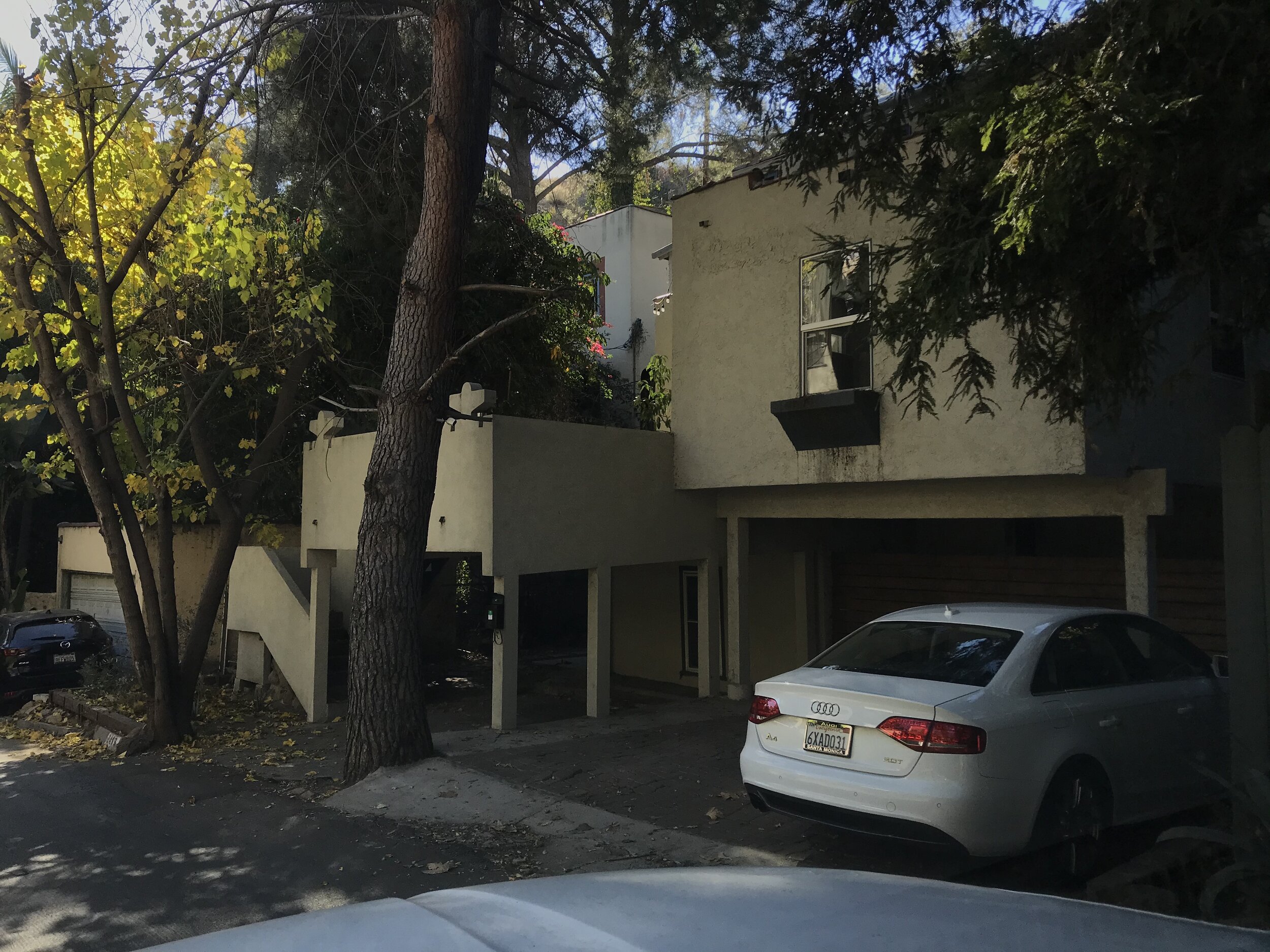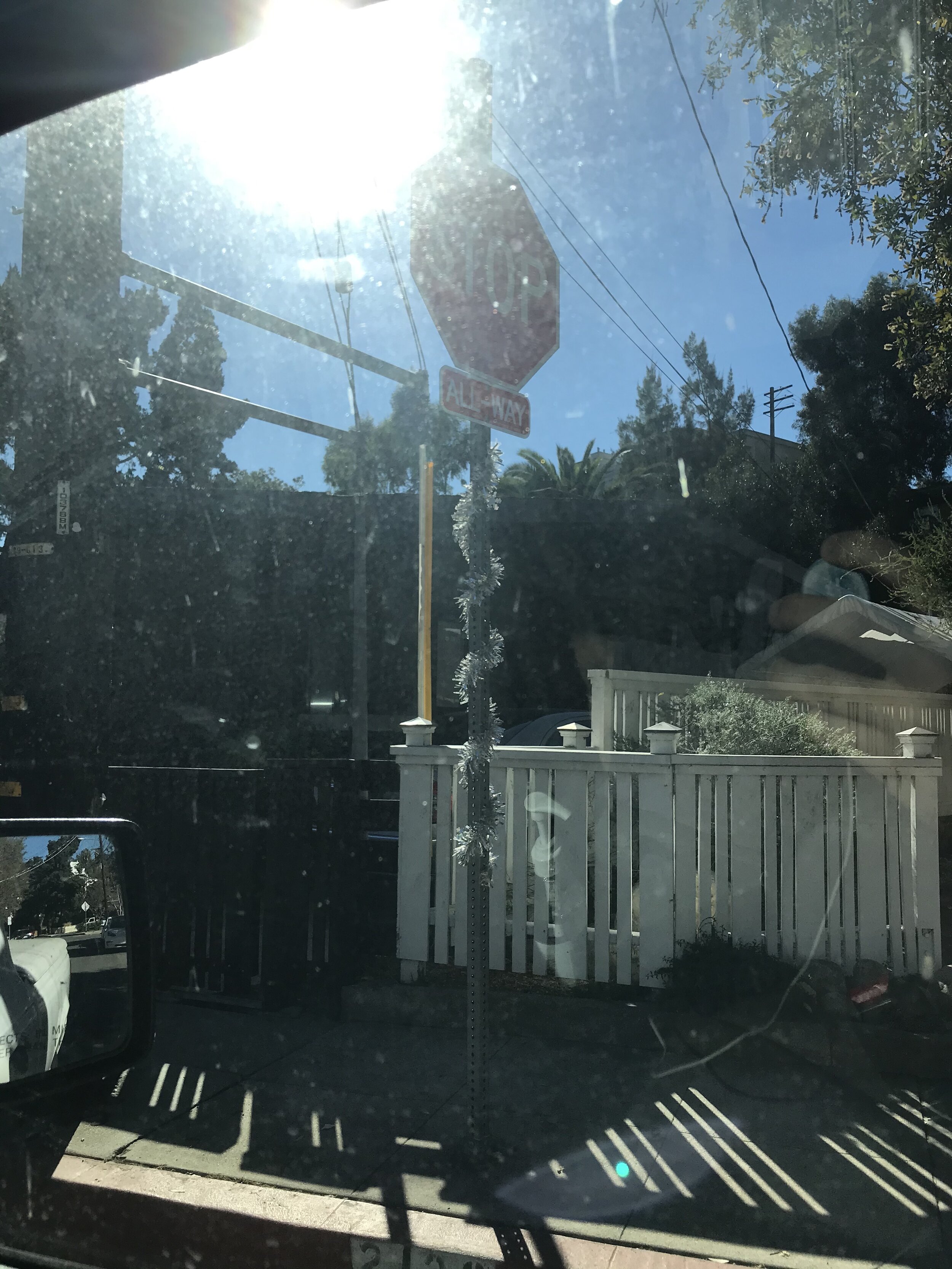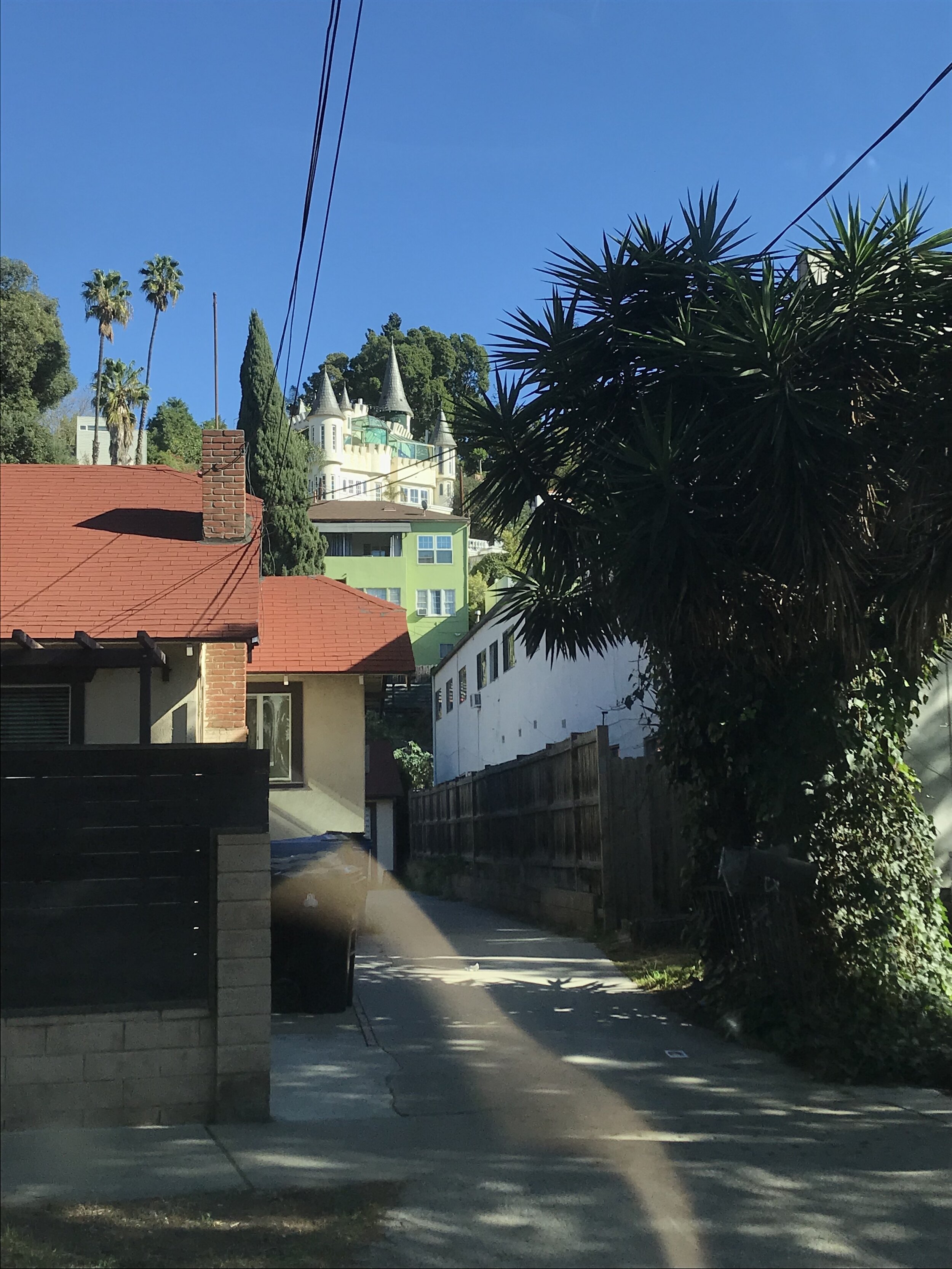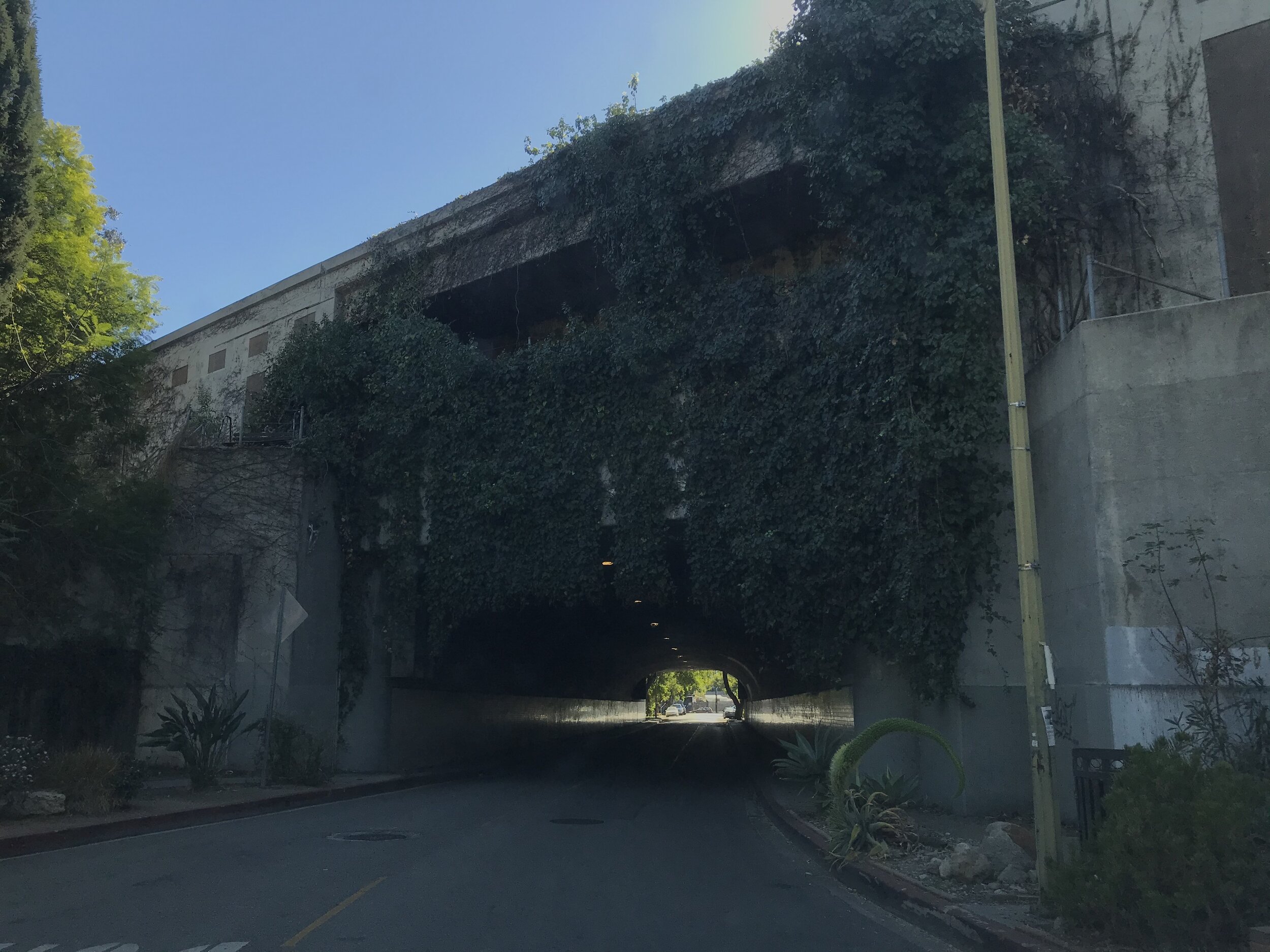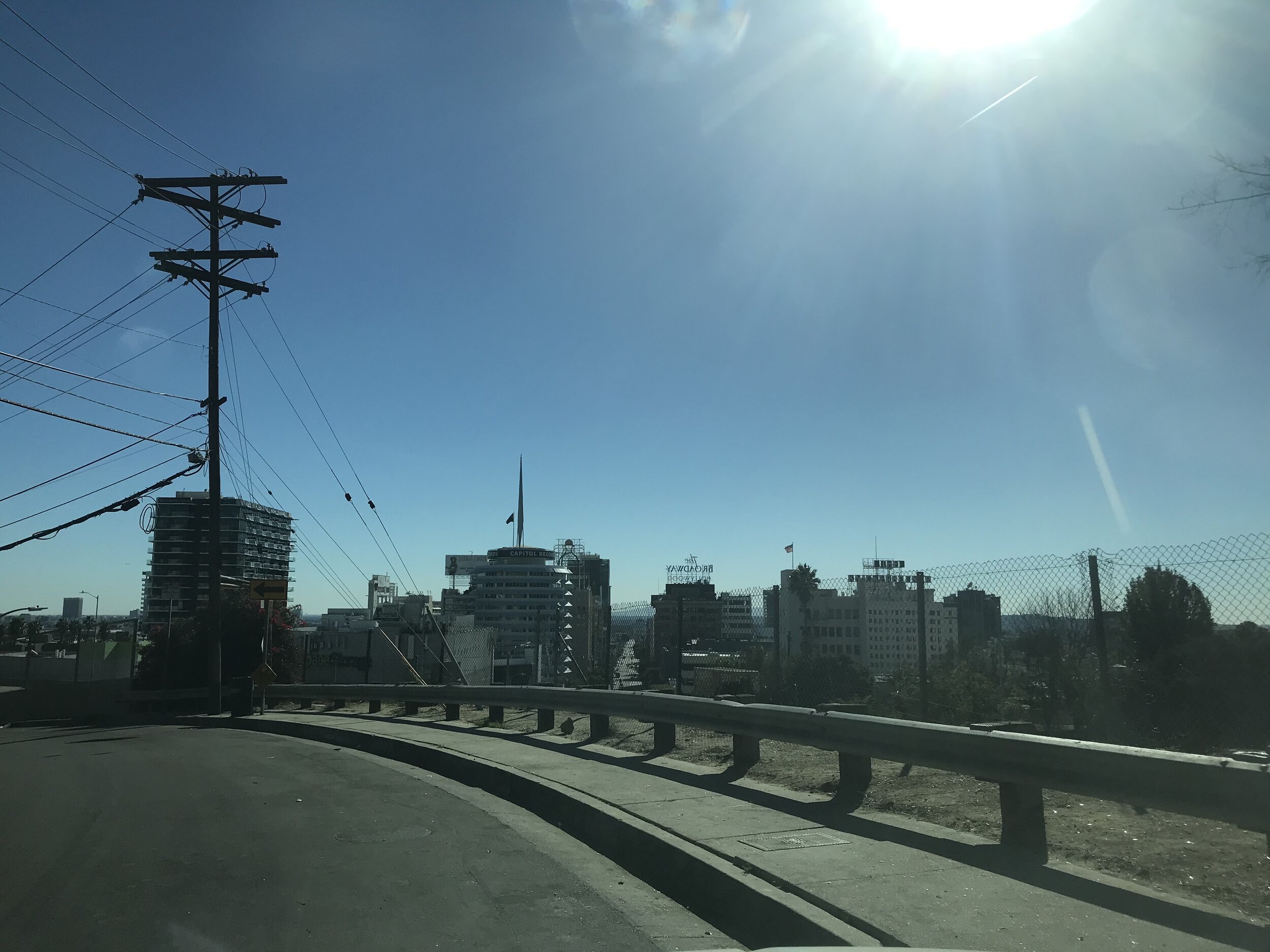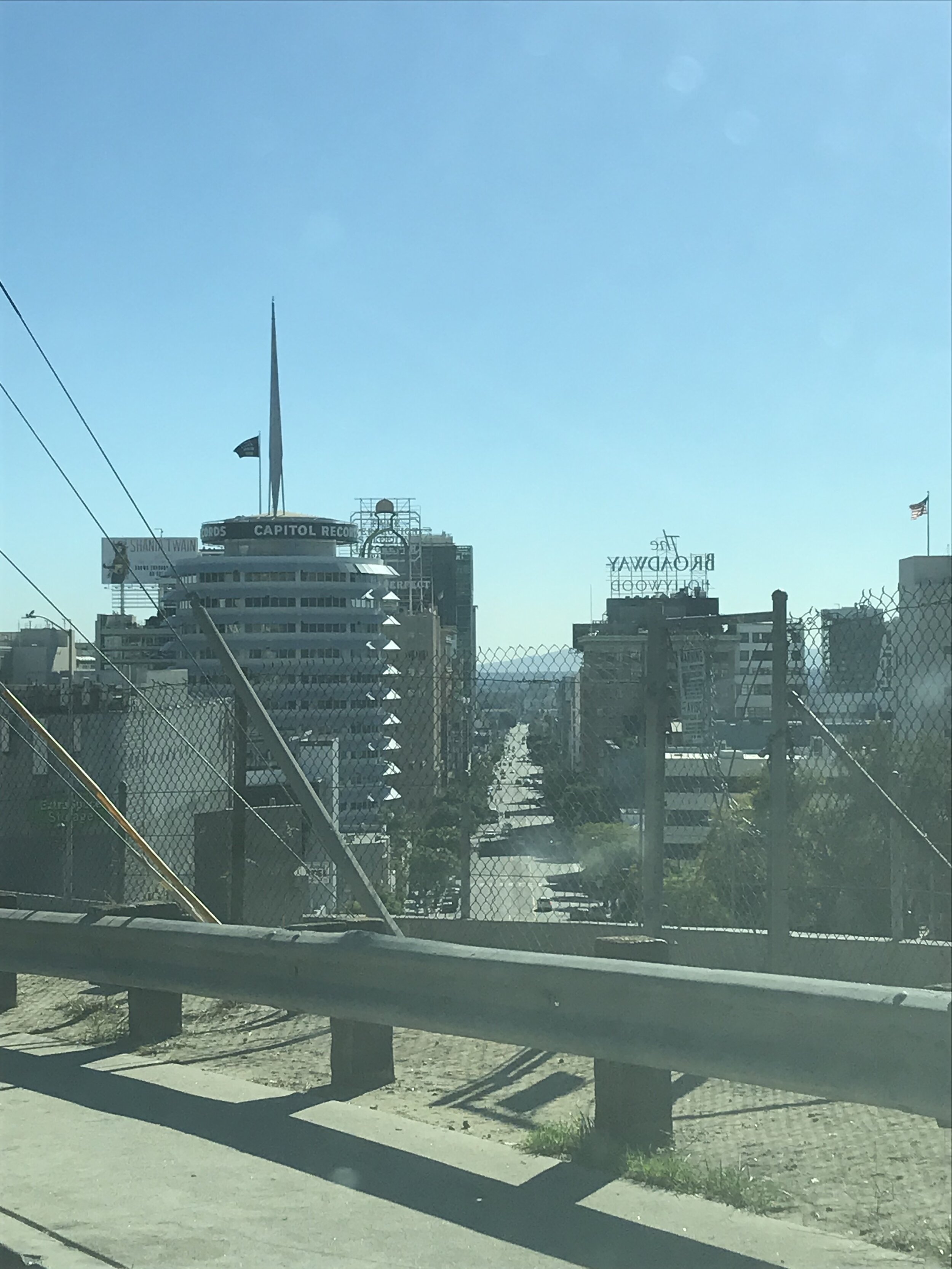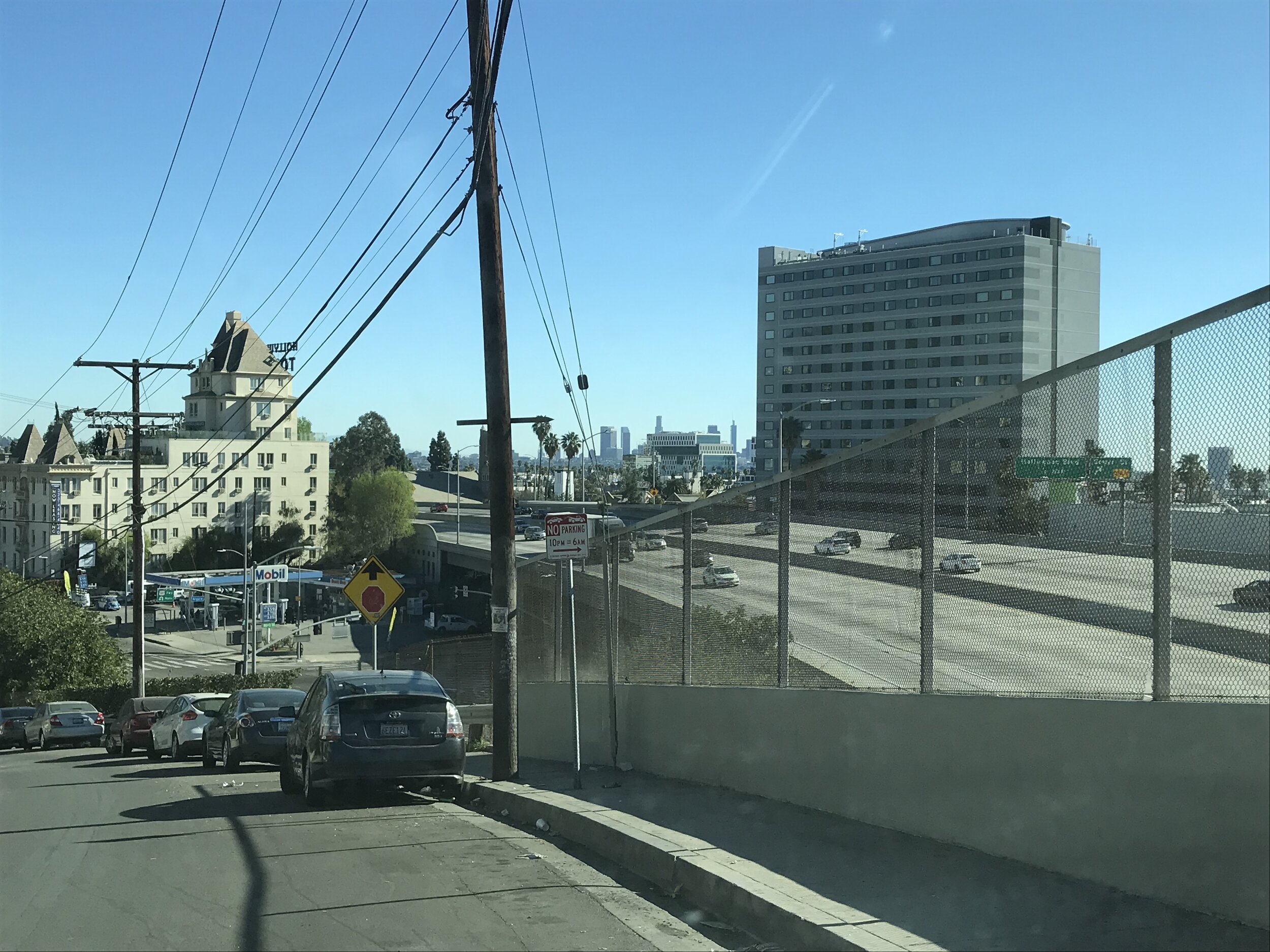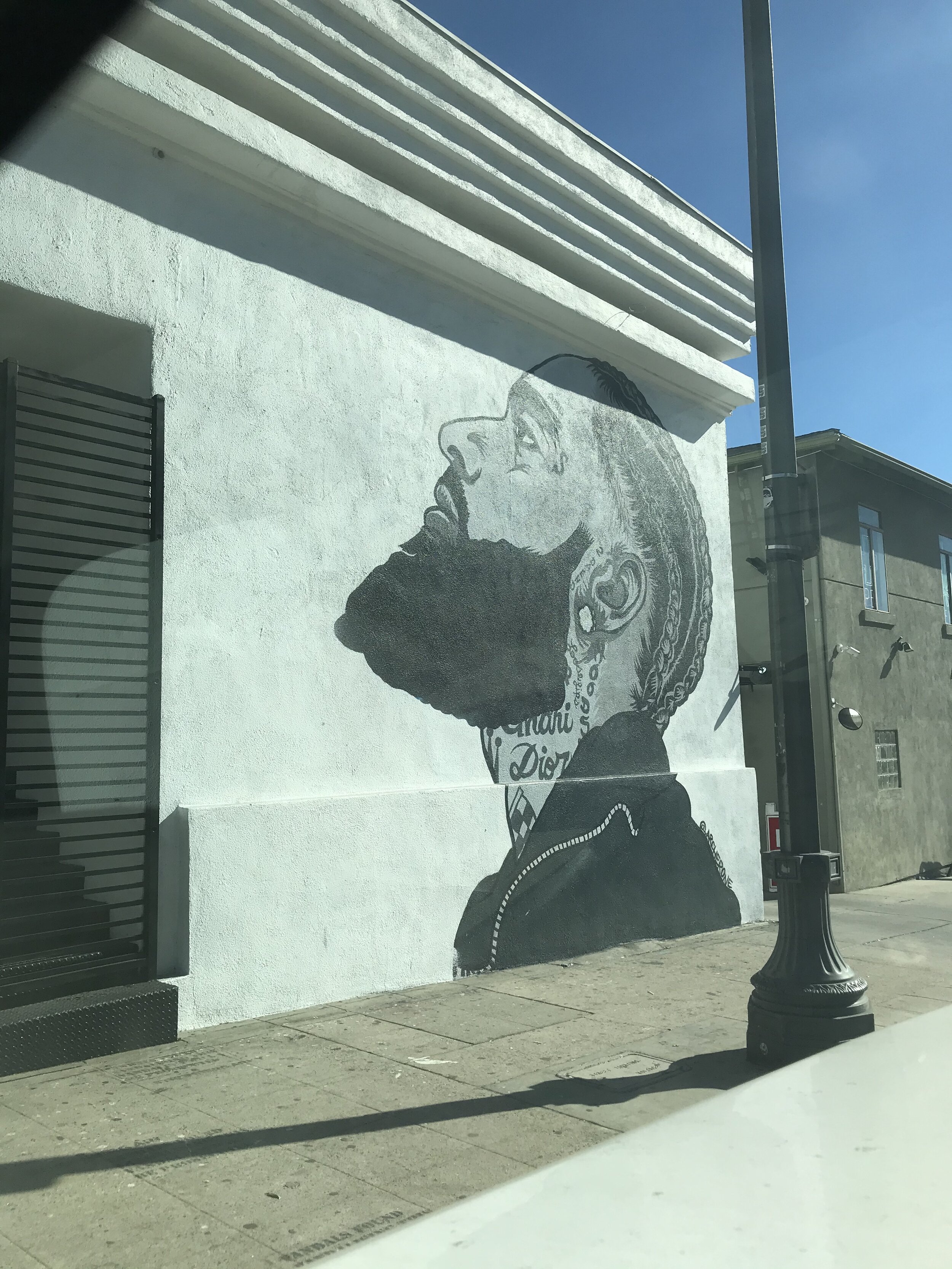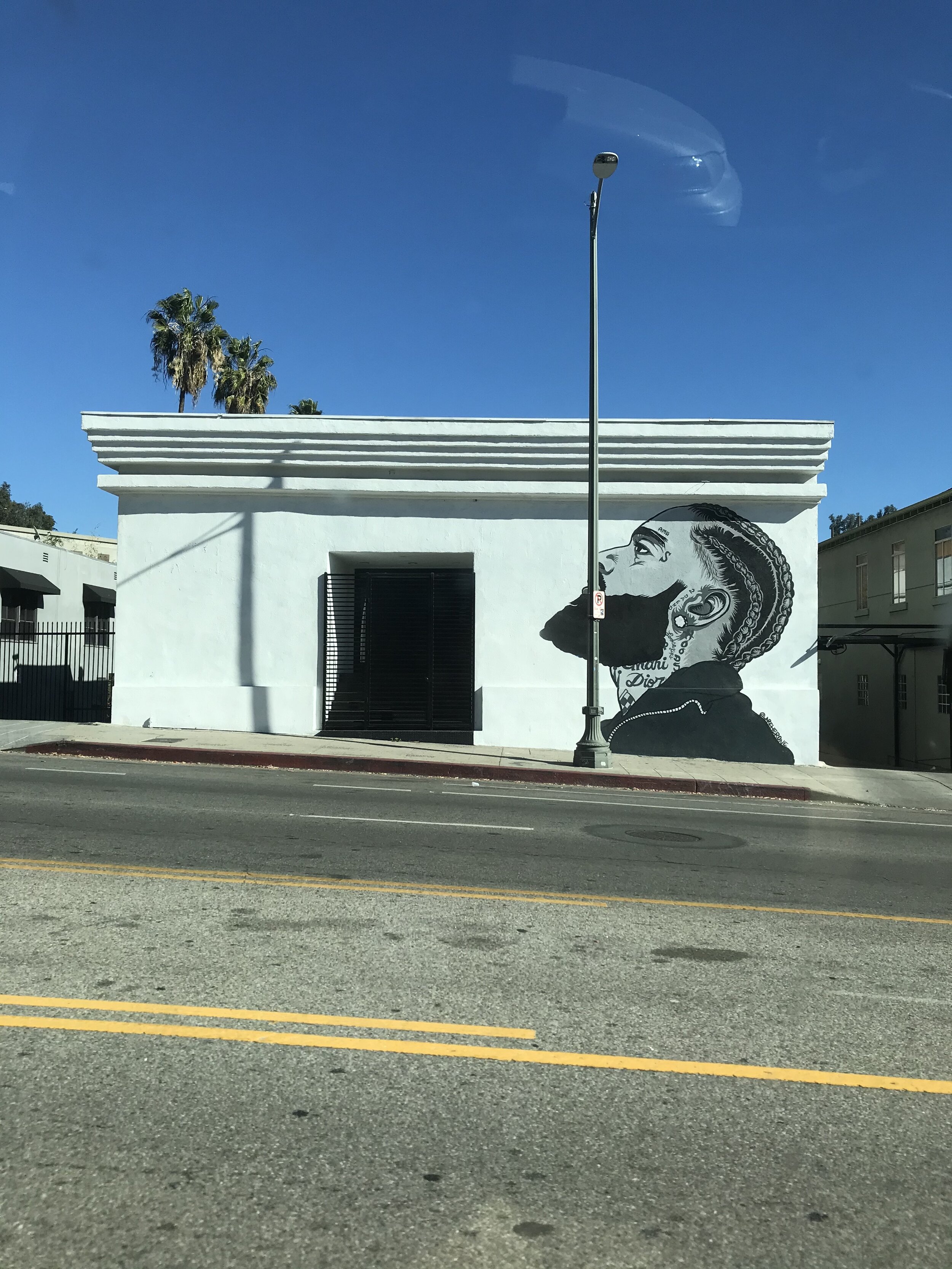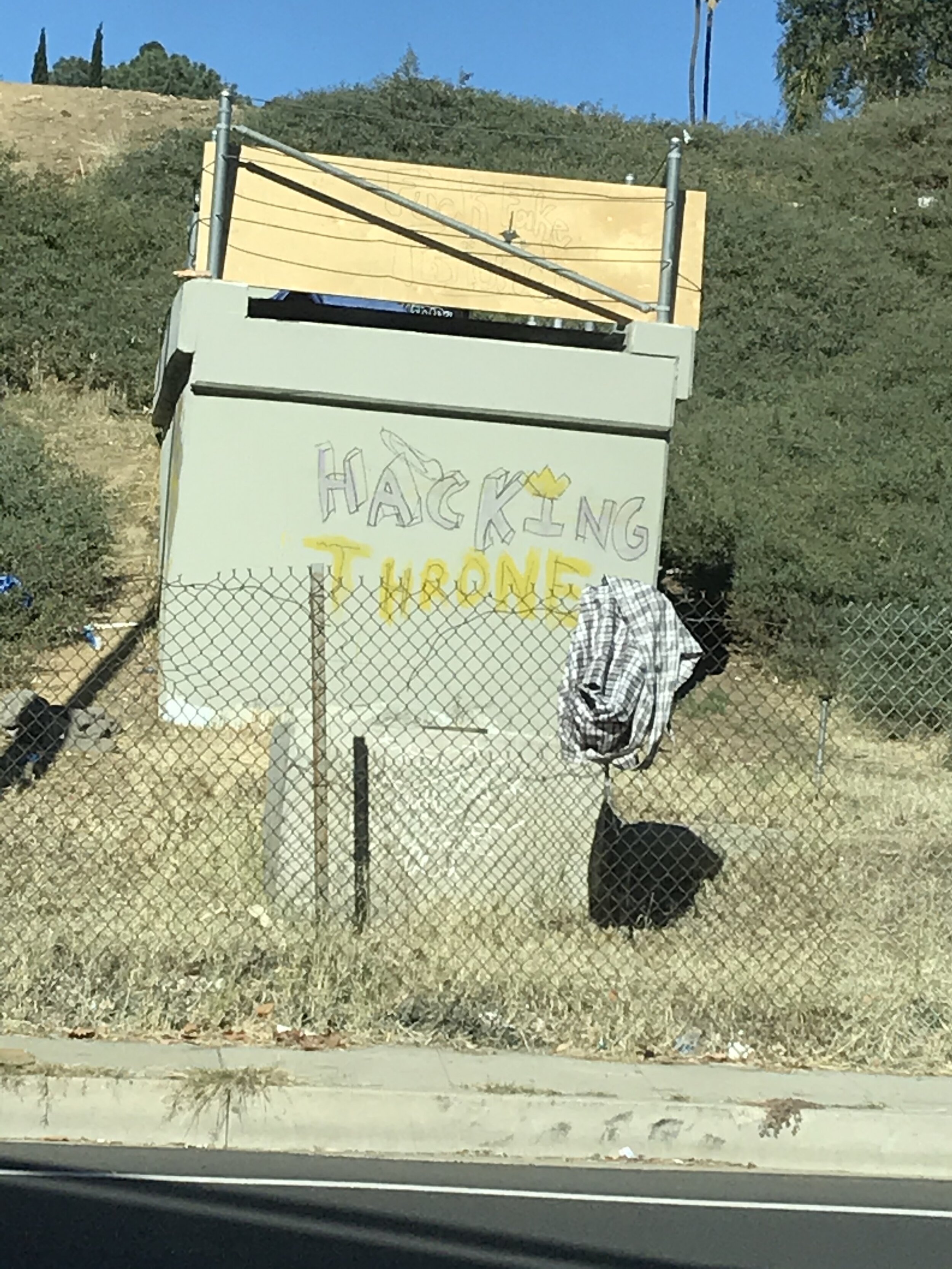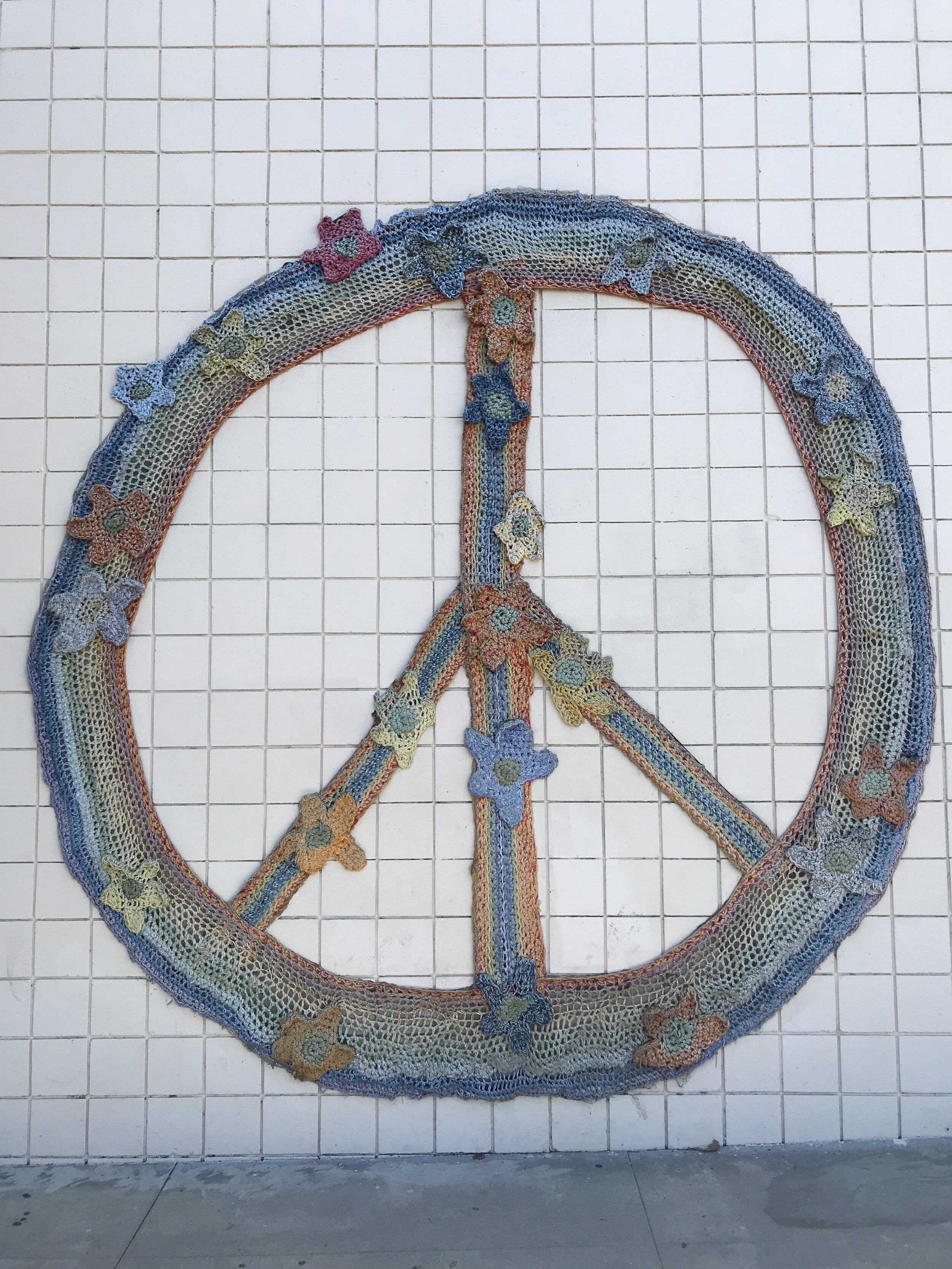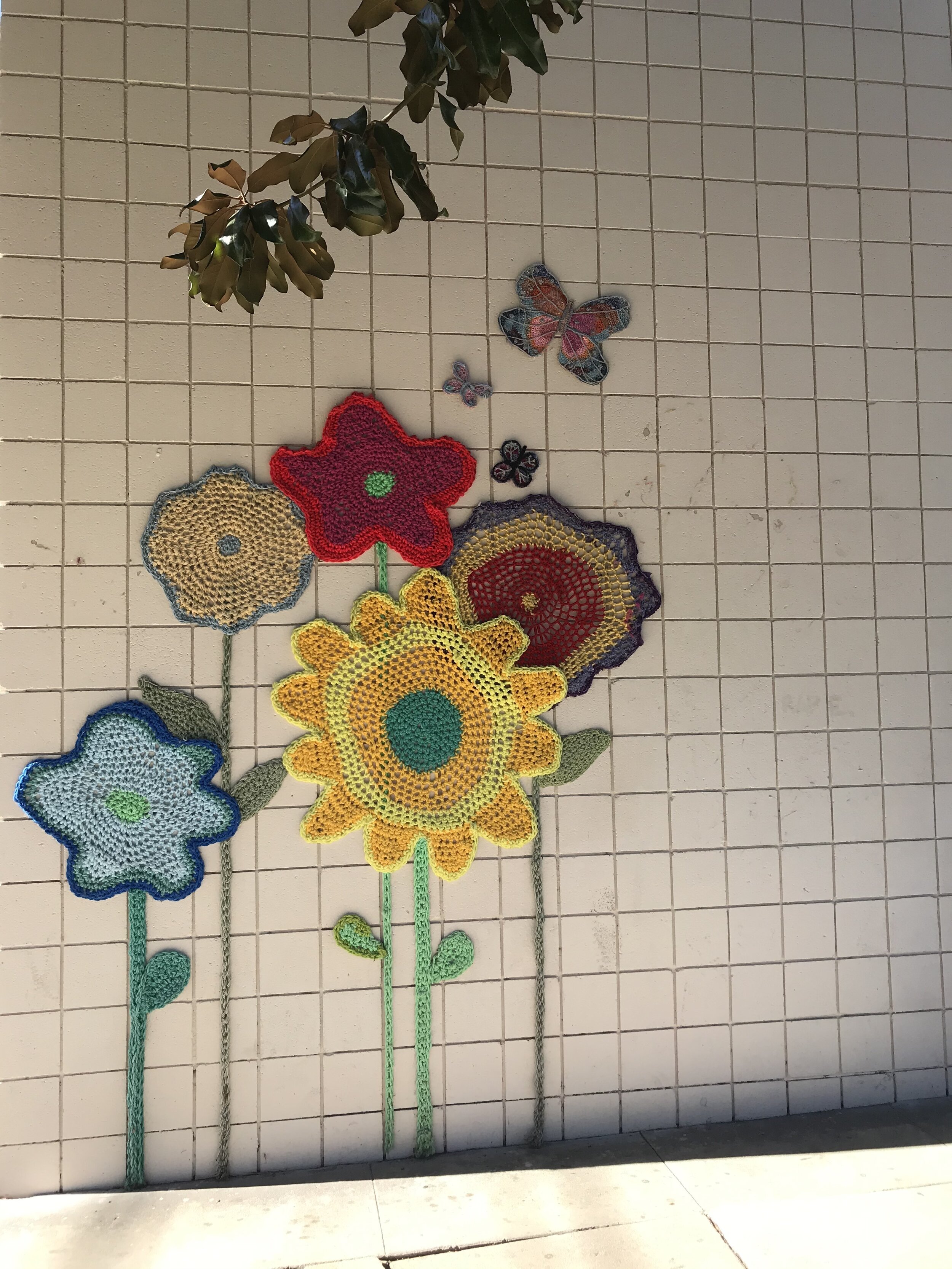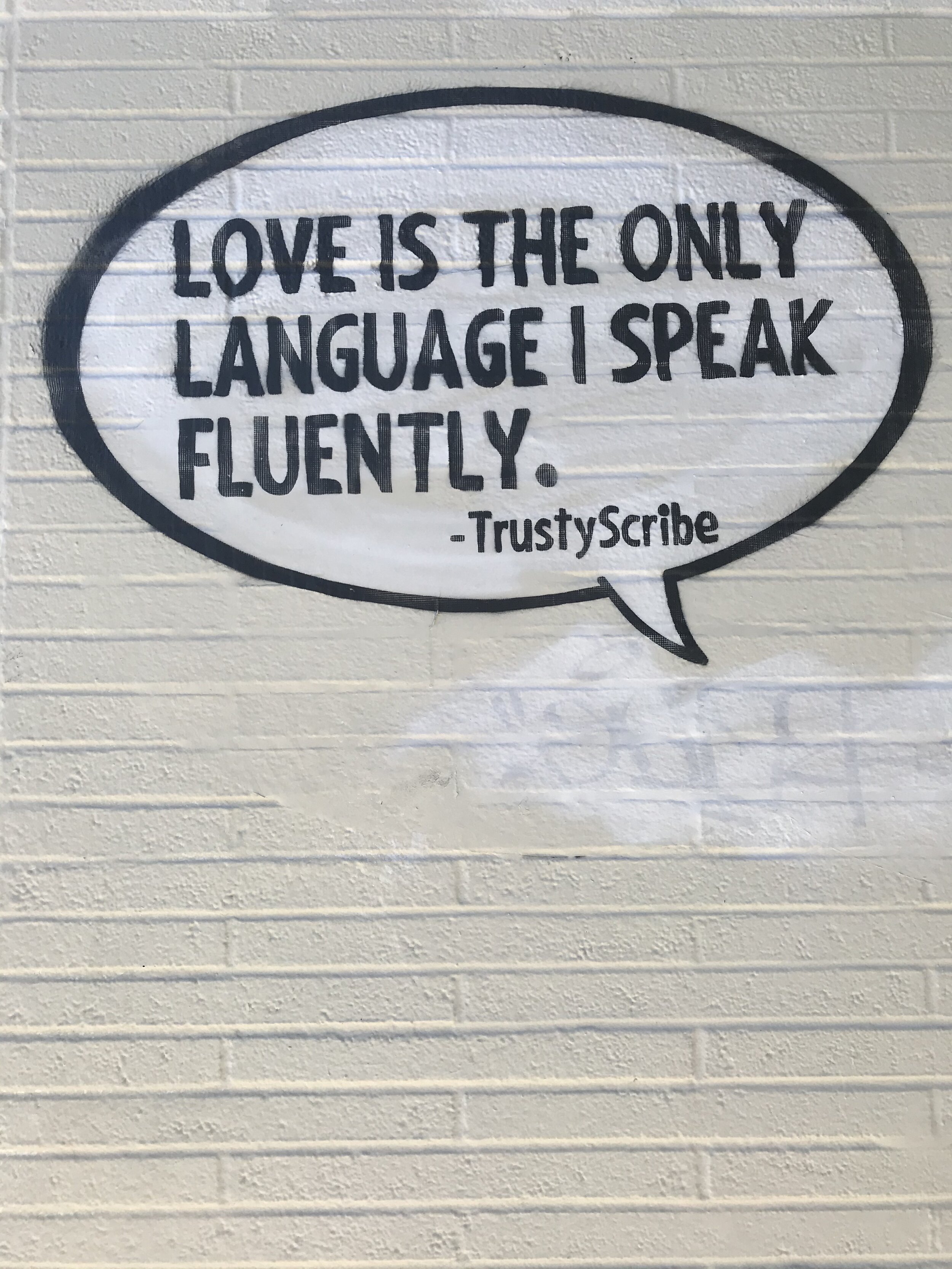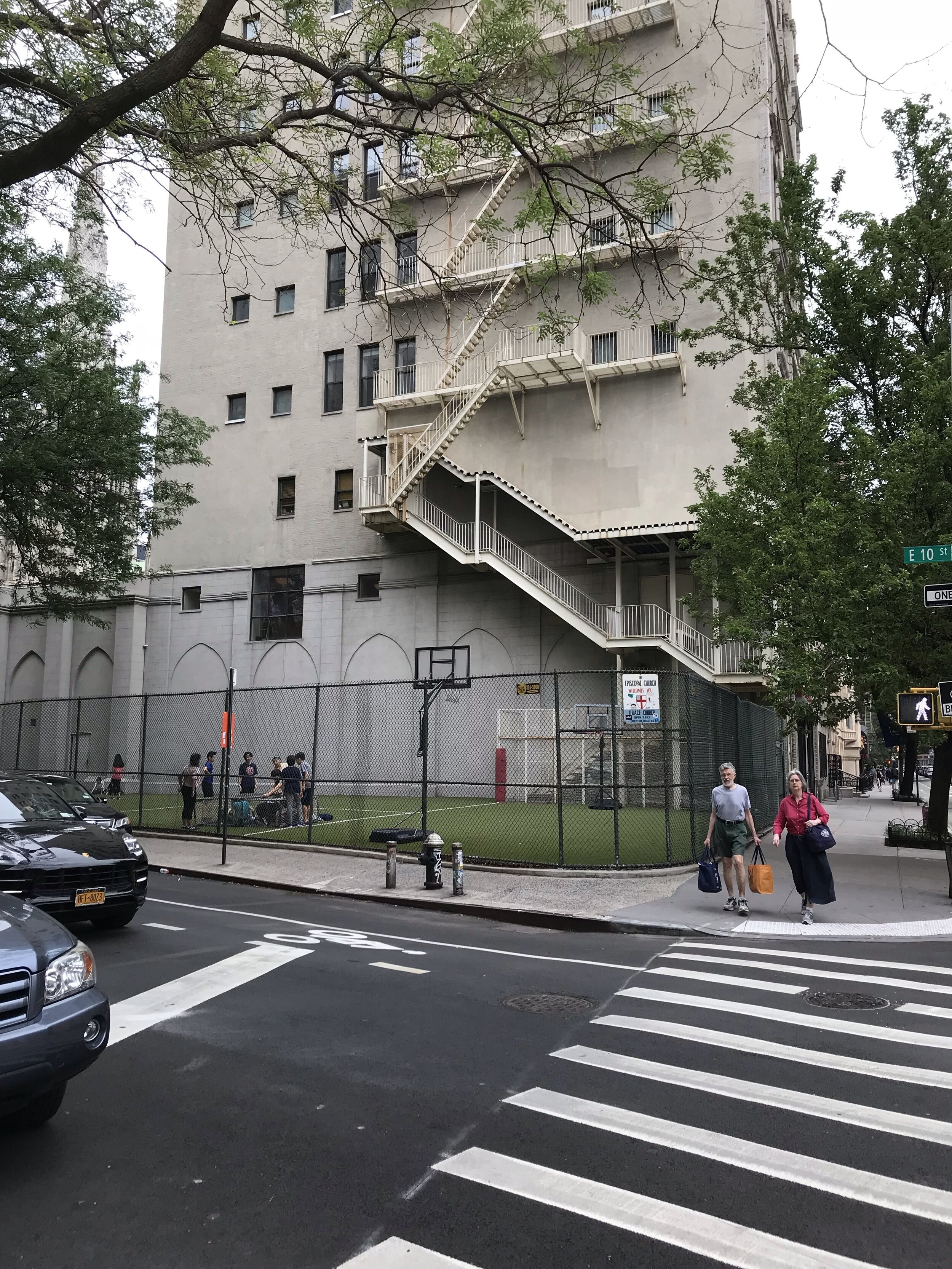Chapter 2: Discovering Hollywood Dell and the Castle on the Hill
East of Fairfax. Stopped at a light. It got busier as I approached Fairfax and stayed that way after I crossed. Alarmingly so. Sure, I had a mask and most were wearing it, but I decided to pull off Melrose and get up to Sunset.

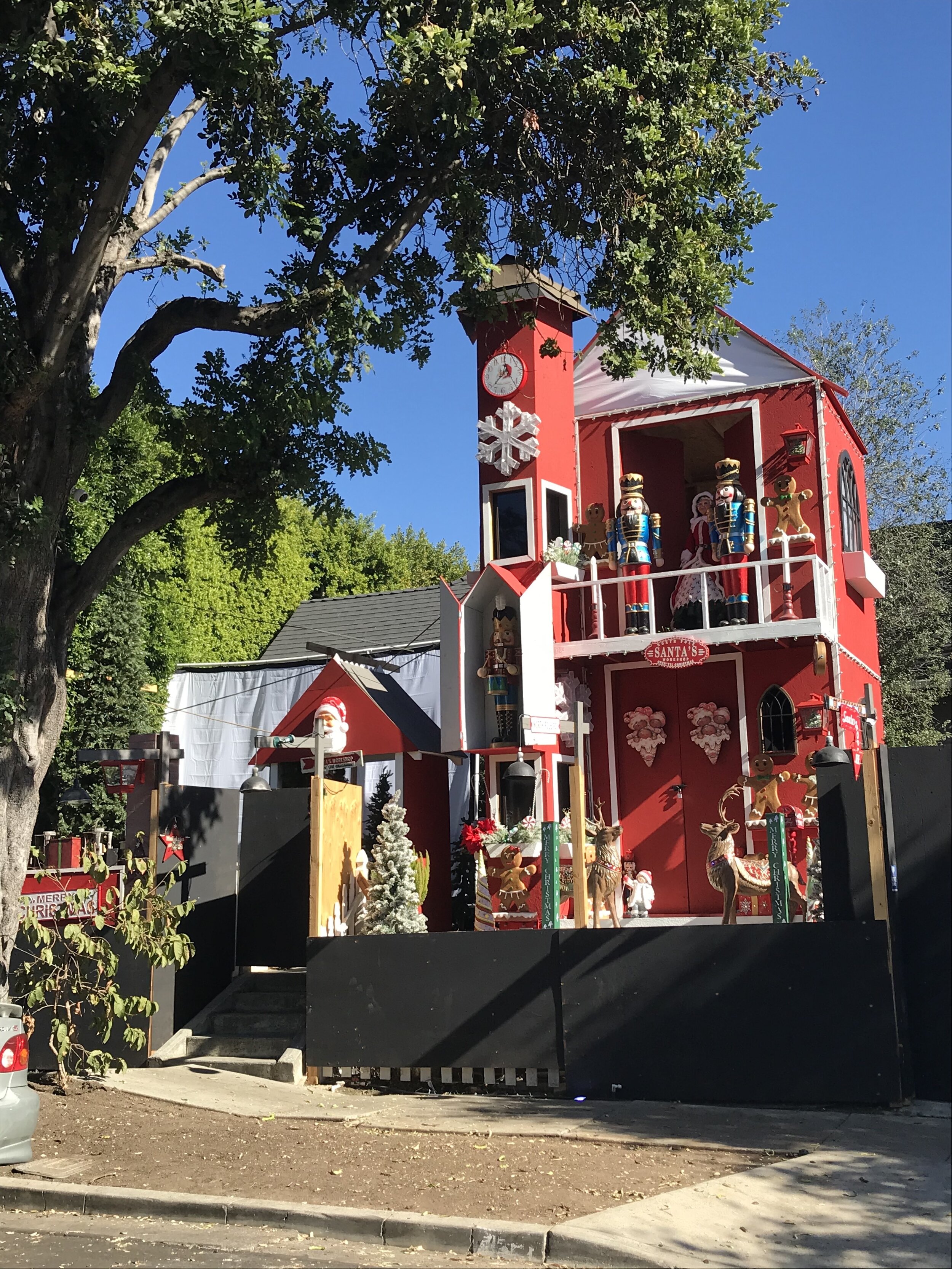
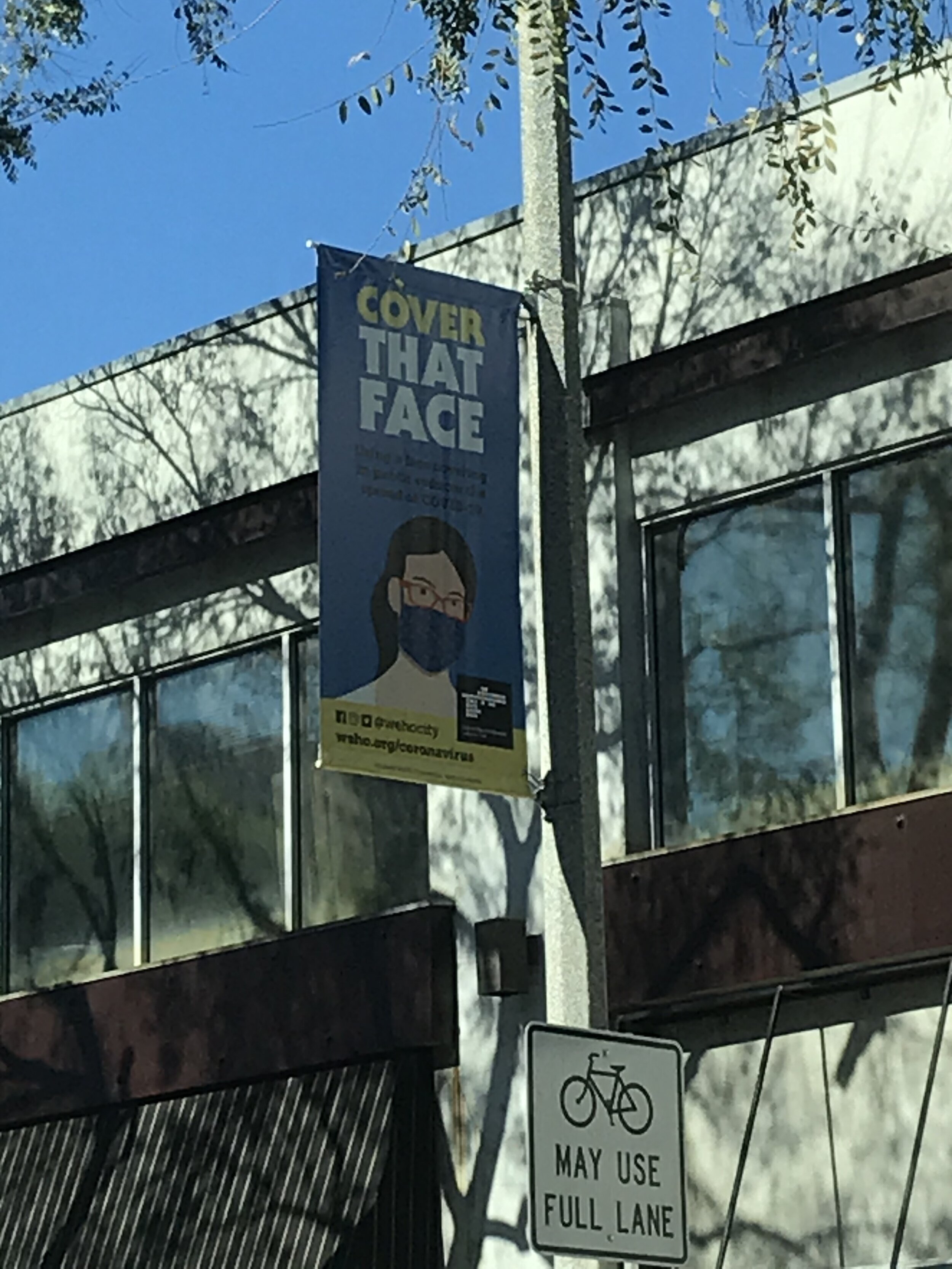
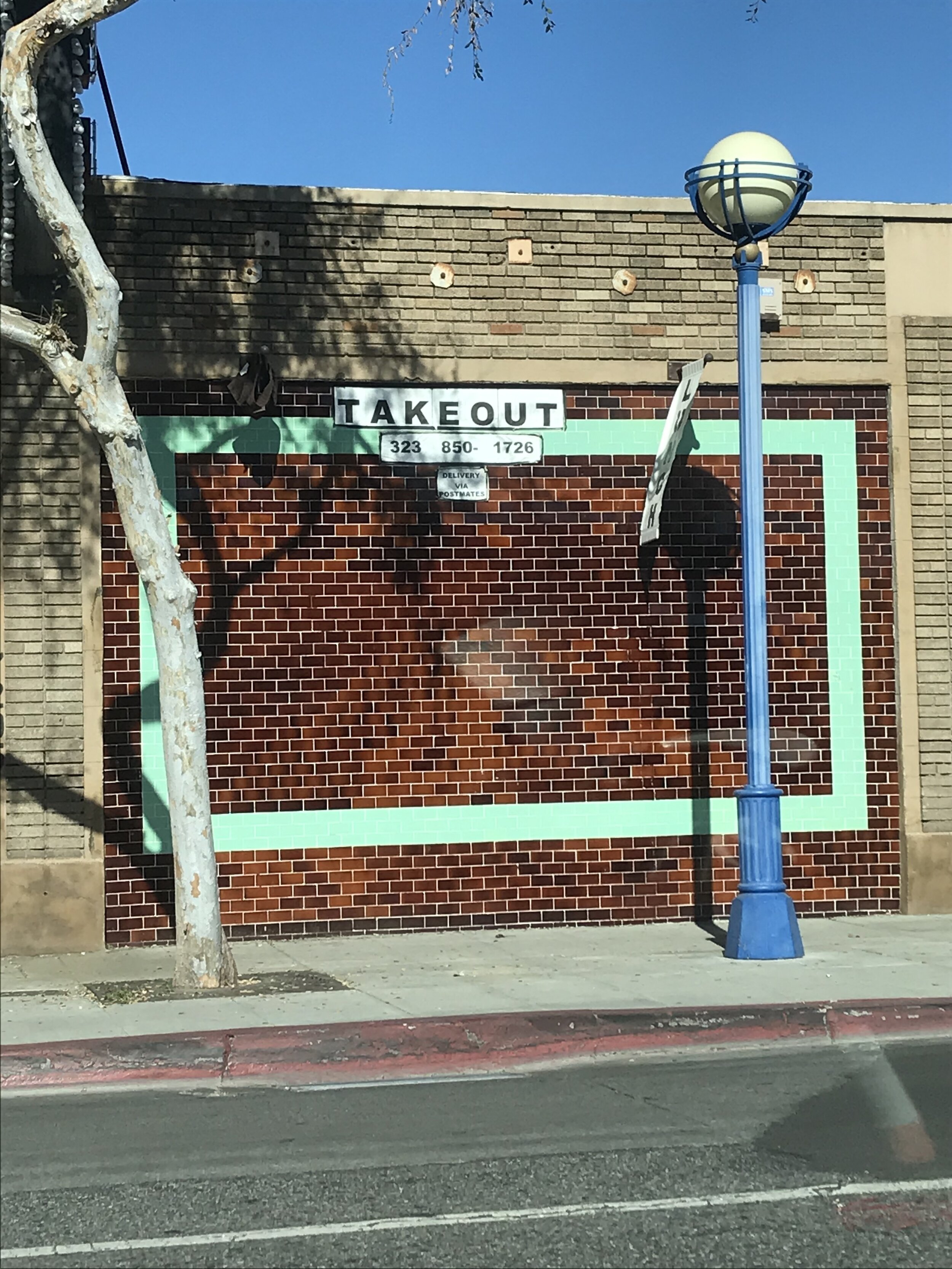
After stopping to take in Santa’s workshop, on an otherwise “normal” side street, I turned right onto Santa Monica and drove through WeHo, before eventually turning onto Highland.
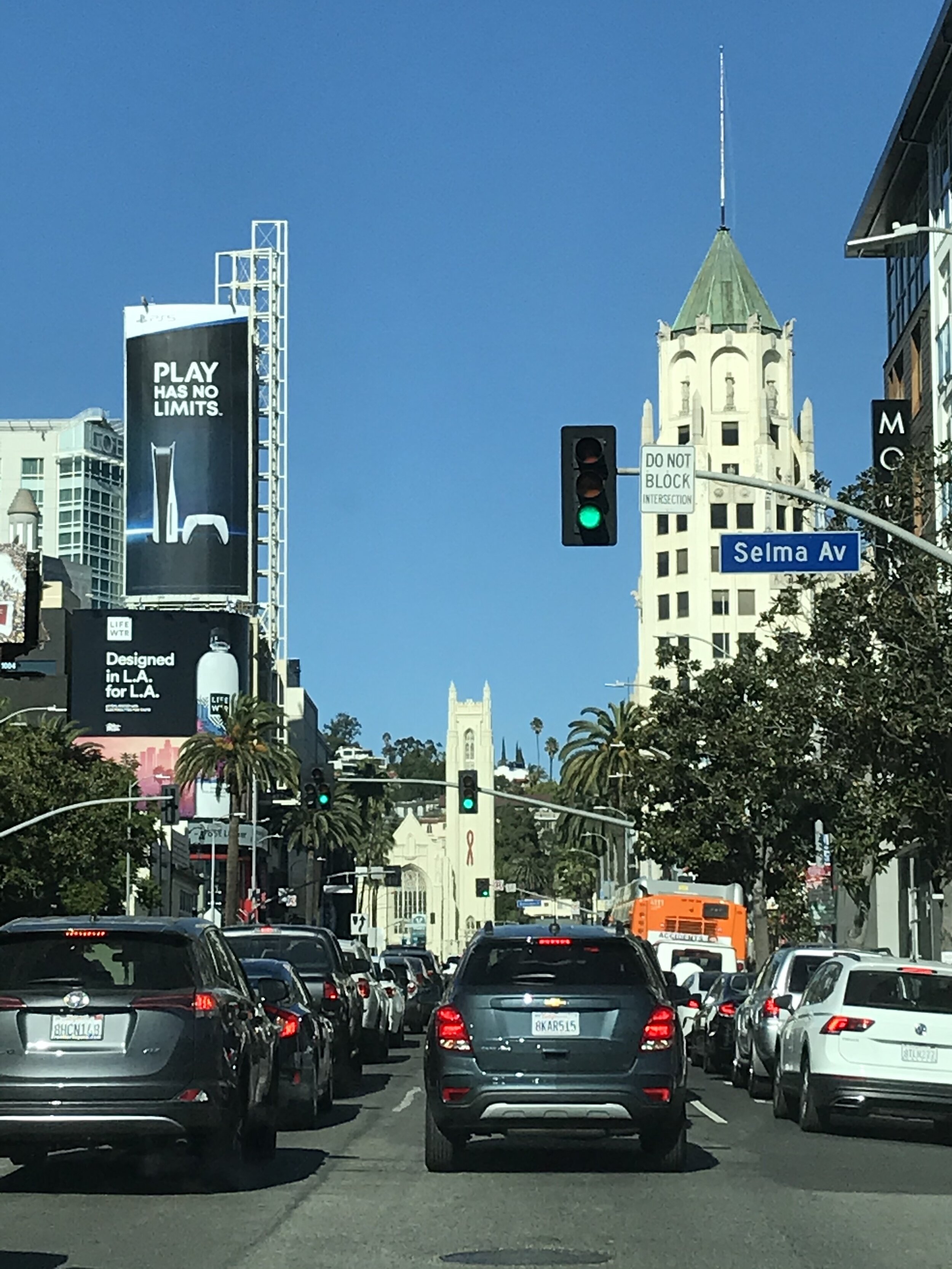
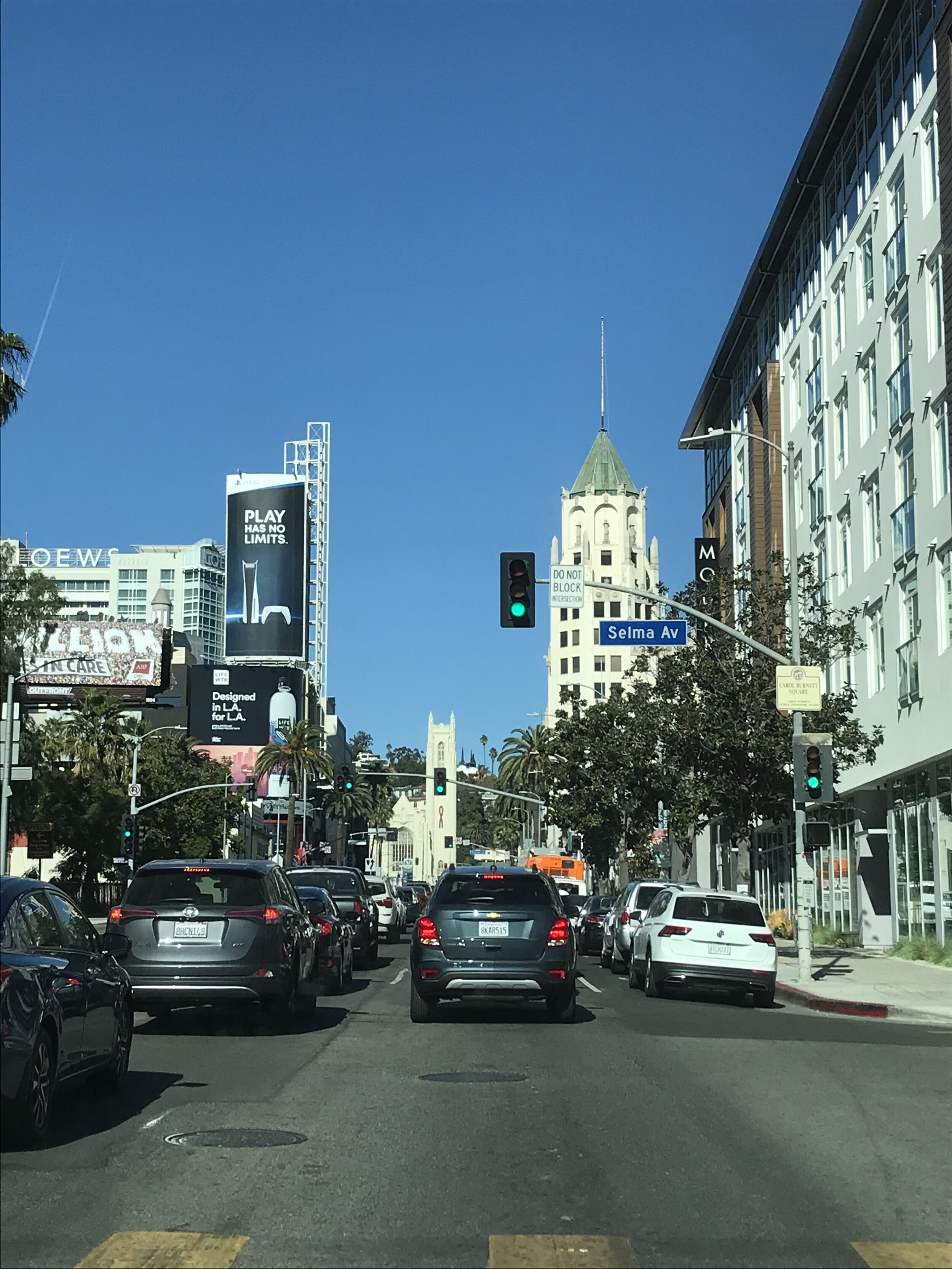
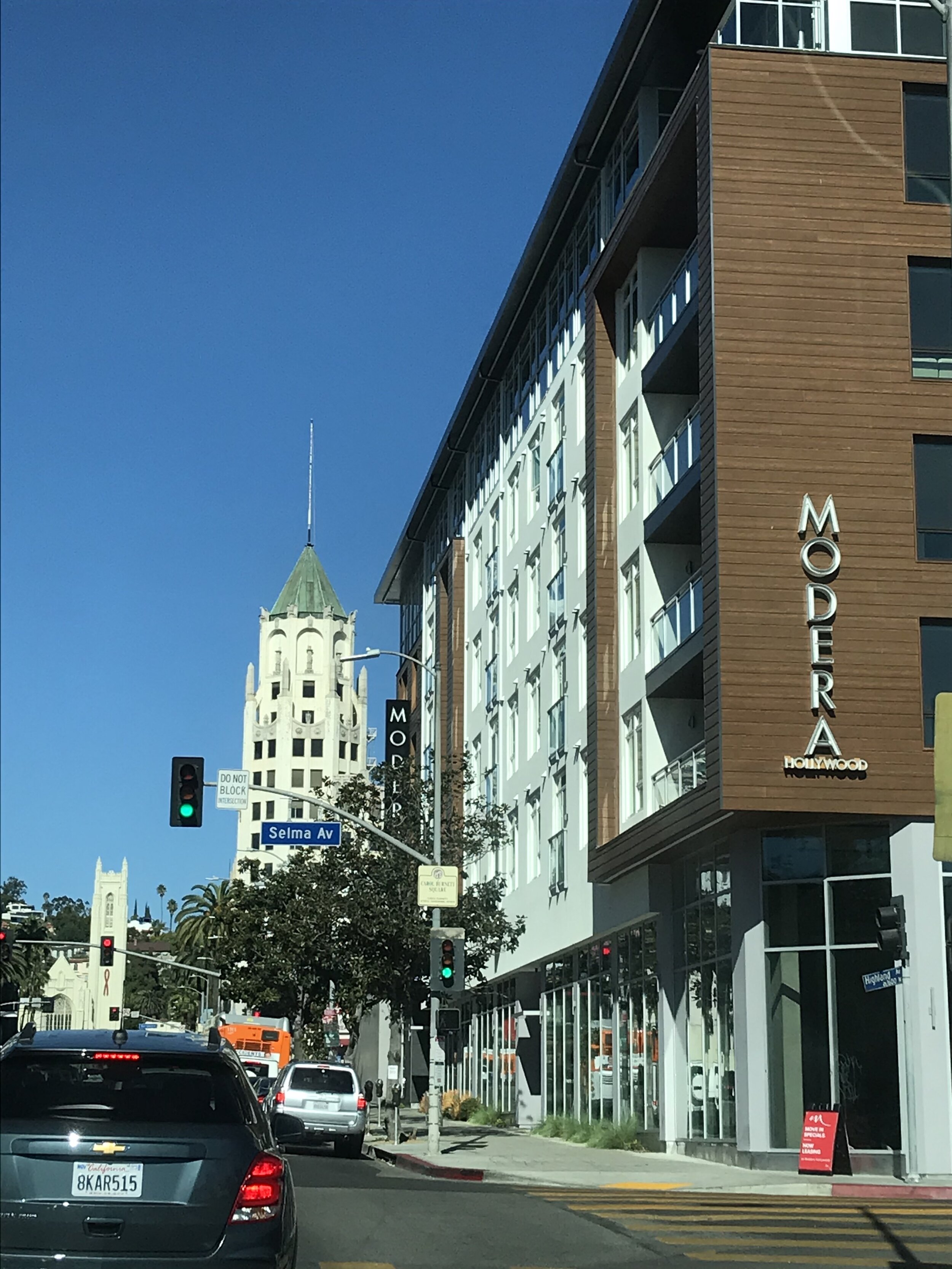
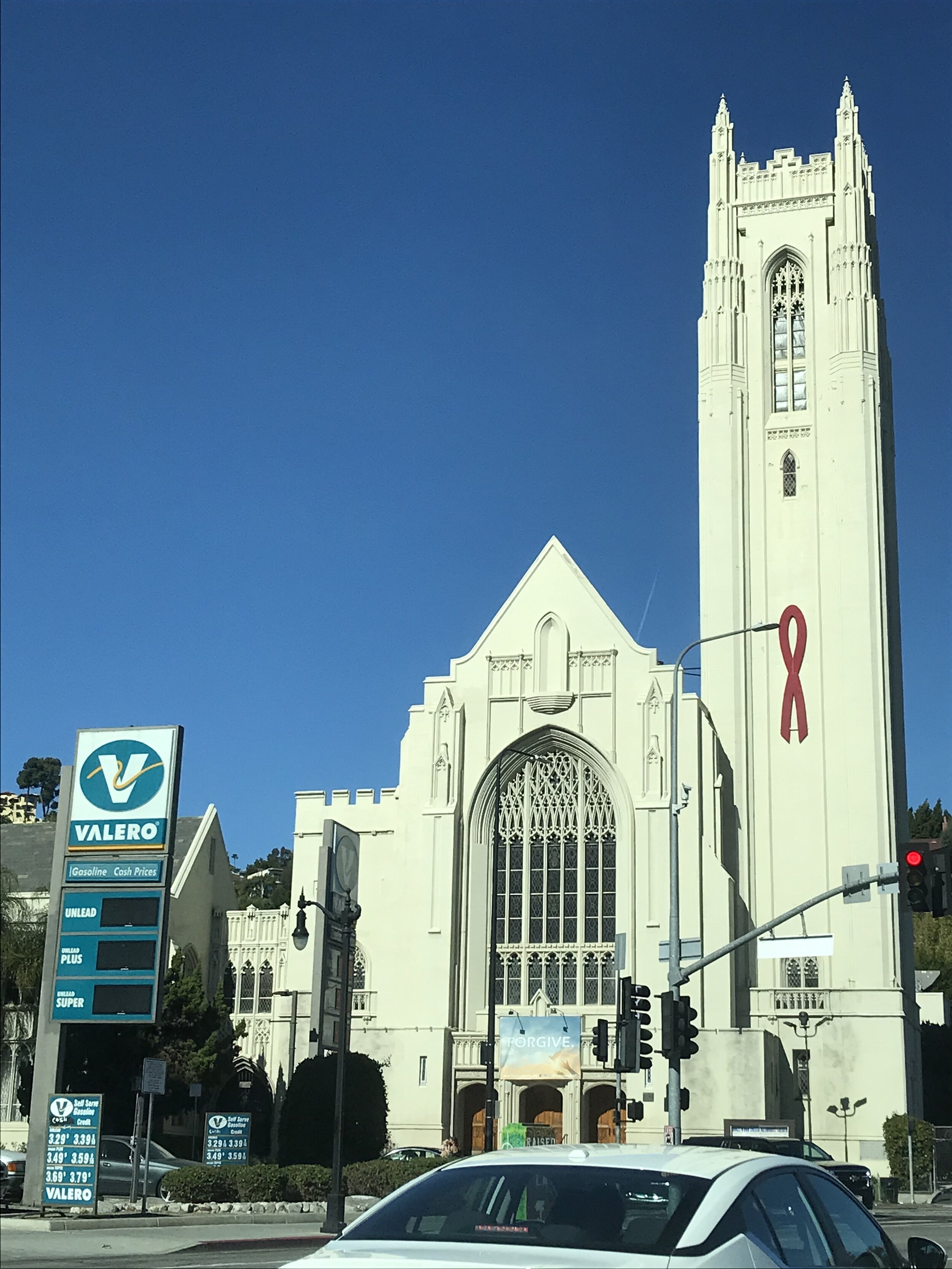
I can’t say I know much about the church other than that it’s Methodist, and its auditorium is the auditorium they used in ‘Back to the Future,’ but I’ve always loved the way it’s positioned as you drive up Highland.
I passed the church and upon looking for the theater, took a wrong turn and happened upon an entrance to the Hollywood Dell.
I looped around and finally made it to the Ford only to discover that the infamous cross above the theater was inaccessible and not quite photogenic from my vantage point, before ultimately going back to drive through the Dell.
I meandered down, taking a sharp right into the Dell. As I drove down the street, I noticed houses were not only lined on either side of the street, but flanked up on the hillsides as well, peering between the alleys of the houses on the street. It was certainly not a high traffic street, at least at that current time, but it was not without life: people on walks, a few folks congregated in driveways, and leftover tinsel from festivities past. To the left I caught a glimpse of a castle on the hill, before ultimately being spit out back into the hustle and bustle of the city, marked by the tunnel under the freeway overpass. Of course, I had more to explore.
Returning from whence I came, again, I came upon the location of the medieval-style castle on the hill, propped above the street by a fortress-like garage. I found myself going up the hill to see what the front? residential? entrance of the castle looked like. I carried on straight to a cul-de-sac while the road kept winding on up the hill. At the end of the road, I found myself much more interested in the Spanish-style abode tucked into the mountain, than the uninspired entrance to the otherwise castle-inspired facade. After repositioning within the cul-de-sac, I continued on the winding road, stopping for some breathtaking buildings.
Up top, I found myself in a familiar location, from a vantage point, I had never experienced. From there I descended.
After leaving the Dell, and avoiding the freeway entrances, I turned right and headed up the road outside the perimeter of my newly discovered enclave and it’s reminders of the world beyond it’s boundaries. I stopped to get a good shot of Nipsey, before turning around again, so I could get a picture of a message on a cement pedestal. I would continue East and see what I would’ve encountered had I turned left when I exited the Dell.
To Be Continued…





